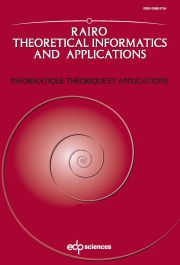Crossref Citations
This article has been cited by the following publications. This list is generated based on data provided by Crossref.
Kulesa, Liga
2013.
Equivalence of Right Infinite Words.
Journal of Discrete Mathematics,
Vol. 2013,
Issue. ,
p.
1.
Buls, Jānis
and
Cers, Edmunds
2014.
Modularity in the Semilattice of ω-Words.
Journal of Discrete Mathematics,
Vol. 2014,
Issue. ,
p.
1.


